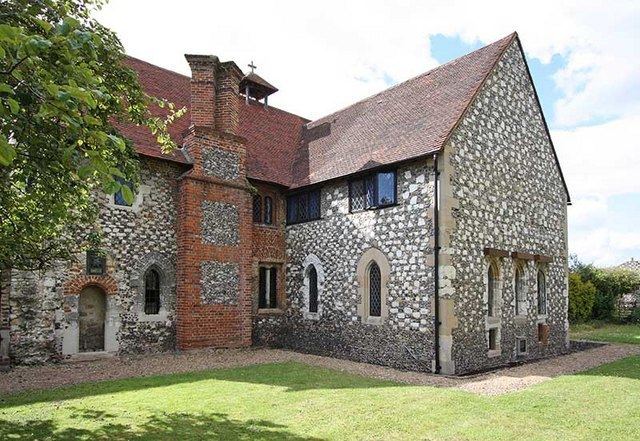Phone +44 1628 604080 | ||
 | ||
Address Lake End Road, Taplow, Maidenhead SL6 0PW, United Kingdom Similar | ||
Burnham Abbey is a house of Anglican nuns near Burnham in Buckinghamshire, England. It was founded as a house of Augustinian nuns, by Richard, 1st Earl of Cornwall. The Medieval community consisted of around twenty nuns at the outset, but was never especially wealthy and by the time of its dissolution in 1539 there were only ten.
Contents
Since 1916 it has been the home of an Anglican contemplative community, the Society of the Precious Blood.
History
The abbey was founded in 1265/6 by Richard, Earl of Cornwall, styled King of the Romans, the brother of King Henry III. Richard endowed it with several manors, including the manor of Burnham, and 'land appurtenant to the manor of Cippenham with a mill, fishery and other rights'. The abbey was situated about a half mile from Burnham. A complaint was made shortly after the foundation that Richard had diverted a watercourse to the abbey that had been used by a nearby village and that he also had given 20 acres (81,000 m2) of common land to the monastery. It is unknown whether this issue was resolved.
In 1311 a nun, Margery of Hedsor, left the monastery and her vows and was subsequently excommunicated. This sentence was renewed periodically for some years until it was cancelled by the Bishop for reasons unknown. A serious legal dispute occurred in 1330, concerning the ownership of the manor of Bulstrode, which had been granted to the abbey but was claimed by a Geoffrey de Bulstrode, who in protest proceeded to vandalise the property and harass the servants of the abbess. Eventually a commission found in favour of the abbey, but by then there had been substantial losses.
Having few assets, Burnham Abbey should have been closed in the first wave of the dissolution in 1536, but a petition by local commissioners delayed its end until 1539. The document of surrender, dated 19 September 1539, was signed by Alice Baldwin, as Abbess, and the nine remaining nuns. At the dissolution, the Abbey’s revenues were valued at £51 2s 4-1/2d. Baldwin was granted a small pension and appears to have spent her remaining years at Aylesbury at the home of her father, Sir John Baldwin.
After its dissolution, the property was leased to William Tyldesley. Upon his death it passed through his widow to Paul Wentworth. The church was demolished in about 1570 and a house was formed from much of the remaining buildings. By 1719, it was a farm with some of the buildings such as the refectory in extremely poor condition. James Lawrence Bissley, an architect and surveyor, purchased the property in 1913, and restored the remaining buildings, converting the original chapter house into a chapel.
In 1916 Bissley sold the property to the Society of the Precious Blood, a community of Anglican Augustinian nuns, who took possession and began to restore and extend the abbey for their use.
Buildings
The Abbey is a Grade I listed building, while the associated walls and structures are Grade II. The chapter house, sacristy, and parts of the frater and infirmary remain of the medieval convent.
